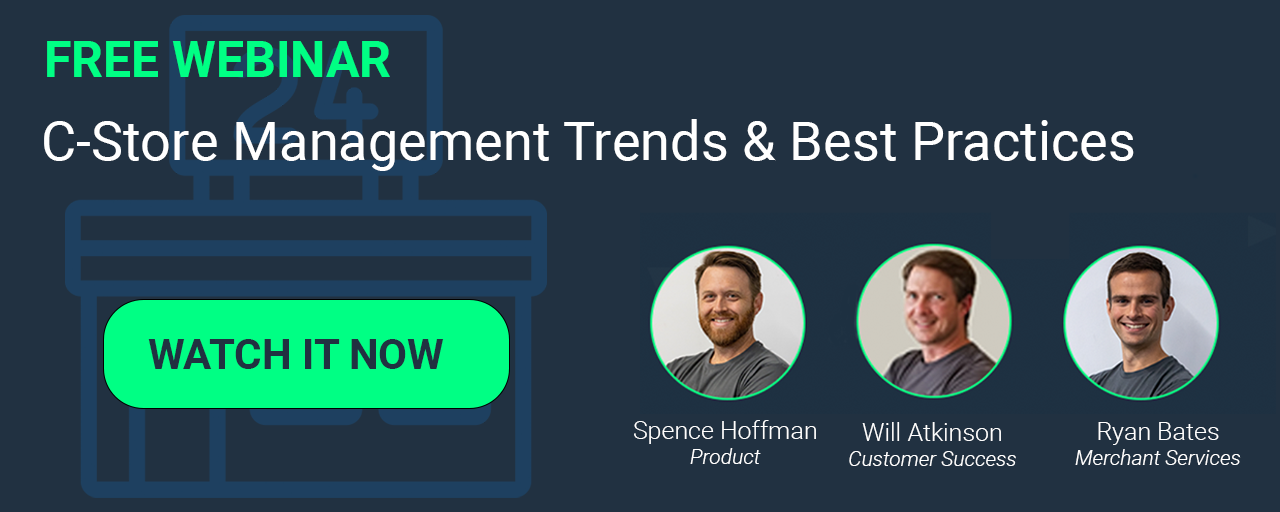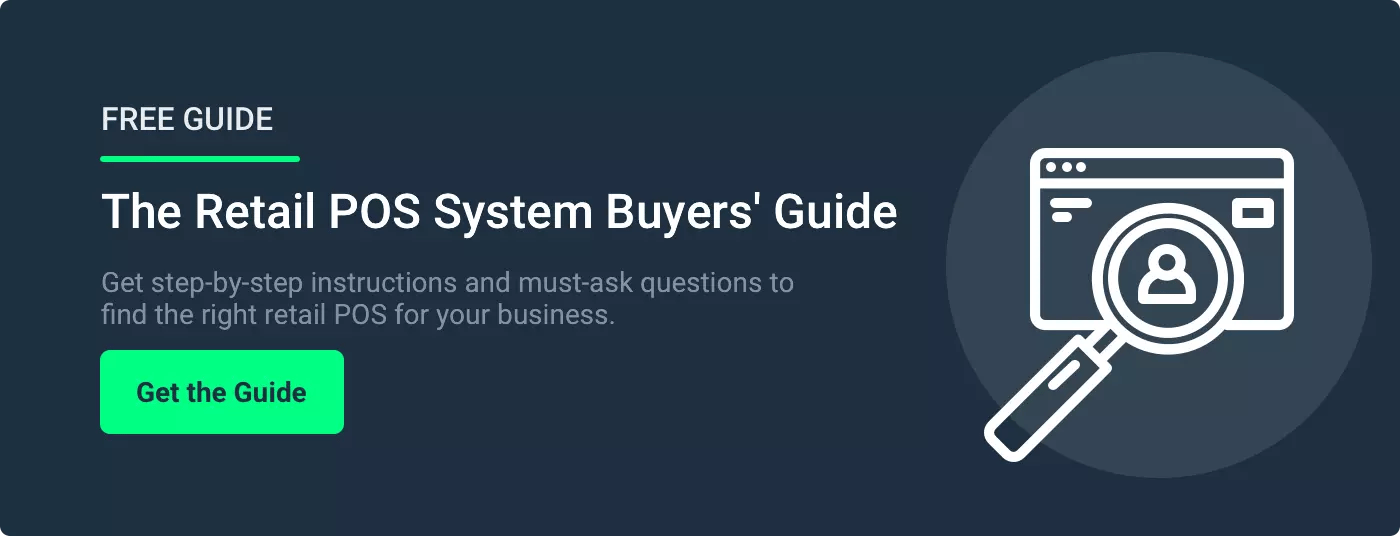Between rising inflation, increased labor costs, and changing customer demands, it can be hard to find a way to keep revenue and profits high.
Getting a handle on your convenience store operating expenses is a solid first step. Taking a bird’s eye view of your operating systems and finding places to trim costs is an effective way to increase your store profits.
In this article, we break down the major costs convenience store owners need to prepare for and offer a few tips on how to keep costs down.
First Things First: Create a Budget Informed by Data
If you haven’t already created a budget for your business, the time to start is now. It gives you an honest view of your business’ financial health and is an essential tool for setting short- and long-term financial goals.
But a budget isn’t helpful if it’s based on rough estimates or hunches. Use your point of sale (POS) system, previous bills, paystubs, and more to get precise data on your convenience store’s financial health. With this data, you’ll know exactly what your monthly operating expenses are and how much you need to sell to take home a profit.
Pro tip: Most modern POS systems also include reporting tools that help you spot trends and make smarter strategic decisions.
7 Convenience Store Operating Expenses To Monitor
There are seven major operating expenses that your convenience store needs to consider:
- Labor
- Payment processing fees
- Inventory and supplier costs
- Rent or lease payments
- Utilities and maintenance
- Business insurance
- Software and technology costs
Let’s break down each area, along with ways to potentially save money.
1. Labor
Staffing is by far the biggest operating expense that convenience stores face right now. As inflation has steadily increased over the last few years, so have wages, putting convenience stores and other retailers with thin profit margins in a tough position.
On average, labor costs make up about 14% of total sales and labor costs have risen by another 1% this year alone.
How can you contend with this issue? You can raise your prices or cut staff. Unfortunately, neither option is good for your customers —- and as many business owners know, the value of retaining great employees can’t be understated.
Ways to cut costs:
Making snap decisions about your staffing can have adverse effects on your customers and business. Instead, consider how to get the most out of your current team.
- Optimize your staff schedule: Use your POS system to identify peak hours and seasons and adjust your staffing schedule accordingly. This will help you avoid paying for staff you don’t need.
- Invest in great talent: Good employees are more likely to stick around when they feel like the business is invested in their success. Use your POS software to monitor employee performance and use that data to conduct regular performance reviews. Listen to your employees’ interests and see if there are training opportunities to advance their skills.
- Know when (not) to hire: When your store gets busy and tasks start falling through the cracks, the knee-jerk reaction might be to hire more staff. Instead, find the actual source of the problem. You might be able to fix issues by overhauling inefficient processes or leveraging technology instead of hiring and training a new employee.
- Consider self-checkout: Self-checkout has its pros and cons — but placing self-checkout machines near your manned checkout is a great way to speed up the payment process and boost sales without hiring more staff. You may want to limit self-checkout to items that don’t require age verification to prevent slowdowns or theft.
2. Payment Processing Fees
Contactless and credit card payments are by far the most popular ways to pay for goods in the U.S. Cash use is on the decline, accounting for only 16% of transactions.
But the convenience of digital and credit card payments comes with a cost — literally. Credit card processing fees vary between POS systems but average 1.5 - 3.5% per transaction. While it might not seem like much, those fees can add up to significant costs over time.
Ways to cut costs:
There are a few practical ways you can mitigate the impact of credit card fees.
- Assess different POS systems and pricing tiers: Different POS systems have varying processing rates, usually depending on the monthly plan, or for high-volume businesses. Ideally, find a POS system that processes payments in-house for the quickest transactions and best rates.
- Use dual pricing: If your POS system supports dual pricing, you can offer discounts to customers who pay with cash.
- Increase prices (strategically): Instead of raising the prices on all of your products, use your POS system to identify your bestsellers and the profit margins of various items. Only raise prices on items where processing fees are significantly cutting into your profits.
Related Read: Essential Payment Processing Hardware for Independent Retailers
3. Supplier and Inventory Costs
Stocking shelves represents another significant cost in running a successful c-store. Some outlets estimate that fully stocking a small store can cost as much as $20,000.
Having your popular items in stock is vital to keeping customers coming back but it also means frequently placing orders with suppliers. To understand how this affects your budget, you’ll need a keen awareness of how much you spend on your products, also known as the cost of goods sold (COGS).
Ways to cut costs:
Efficiently managing inventory is the foundation of any successful convenience store — but that’s easier said than done. Here are a few tips:
- Utilize inventory management software: Optimize your inventory management by using a POS system with built-in inventory management software. This will give you a real-time view of stock levels and streamline the reordering process, helping avoid stockouts or overstocks.
- Choose suppliers wisely: Use your inventory management software to monitor the profit margins of goods sold by certain suppliers and their lead times. If items consistently sell but margins are tight, try to renegotiate terms.
- Monitor sales performance: Check your sales data to find any underperforming items and either find ways to sell them (e.g., put them on sale) or replace them with a different item. There’s no point in stocking items your customers don’t like.
4. Rent and Lease Payments
Location accounts for a large portion of a convenience store’s operating expenses in the form of rent and leasing agreements.
Rent varies drastically depending on where you are in the country. For example, in Colorado, the average rent for retail spaces is about $35 per square foot annually. In Georgia, the average rent sits just under $20 per square foot. And even those costs can vary based on whether you’re located in a bustling city, a quiet neighborhood, or an up-and-coming area.
It’s tempting to think that being in a bustling area with lots of foot traffic will automatically equal success. Always assess the potential foot traffic and average transaction size against the cost of rent. In some popular areas with high rental costs, your profit margins may be so thin that it’s not worth it.
Your budget should also account for rental increases, especially if the surrounding area is developing rapidly.
Ways to cut costs:
You won’t have much control over rent and leasing payment amounts. Instead, these costs should be major considerations before you open a new location. That said, depending on your landlord, you may be able to renegotiate the terms of your agreement periodically as market conditions change.
If you have a large space, you might consider contacting other local businesses to sublease part of it. This has the advantage of reducing your operating expenses while making connections with other business owners and bringing in more customers.
5. Utilities and Maintenance
Everyone has bills to pay, convenience store owners included. Utility costs are rising in some areas and with so many refrigerators, freezers, lights, and other equipment, they can add up. Some sources estimate that convenience store utilities can add up to over $1000 per month.
And that’s just the costs for when everything is working. You also need to budget for occasional repairs.
Ways to cut costs:
Drinks need to stay cold and lights need to stay on, so it might seem impossible to lower these costs — but you’d be wrong. Try out a few of these methods to save money on utility and maintenance:
- Use energy-saving appliances: When picking out appliances and light fixtures, look for energy-efficient options. For example, invest in LED lights, which cost less and last longer. You can also install motion sensors in bathrooms and other seldom-used areas to save money on lighting.
- Check the seals on your refrigeration units: You’d be surprised how much harder a fridge has to work to keep things cold when seals wear down. Regularly check and replace the rubber seals on your units to ensure they’re working as efficiently as possible.
- Perform preventative maintenance: Don’t just wait for something to break to fix it. Create a monthly checklist of items that you can do to prevent problems before they happen.
6. Insurance
Insurance costs are skyrocketing across the US for both consumers and businesses, which is putting the squeeze on business owners’ finances. General liability insurance premiums alone can cost over $1000 per year, and worker’s compensation ranges from $400 to $1300 annually.
Add in the fact that many c-stores doing business online will need data protection insurance as well and these costs can add up quickly.
Ways to cut costs:
Try your best to limit your coverage to the areas you really need it (without putting your business at risk). You might also try to work with insurers that offer a Business Owner’s Policy (BOP), which bundles different types of insurance together at a slight discount.
7. Software Subscriptions and Services
Most small retailers use a suite of software tools to keep up with demand and meet customer expectations. That software can include music streaming services, POS software, inventory management solutions, antivirus programs, and more.
Most systems run on a subscription model, and those costs will add up.
Ways to cut costs:
Software is necessary to run a modern business and meet customer expectations — but there are ways to reduce waste:
- Do an audit of your services: Audit all of the services you currently pay for. In some cases, store owners do this and discover they’re paying for a service they don’t even use. Then make a list of what each service is for and how often you use it.
- Research alternate systems: You probably need many of your services, but maybe not separately. Ideally, try to find systems that are affordable and have frequently used features built in. For example, instead of using a separate program for your inventory and payments, use a POS system that has inventory management built in.
While following these steps might save you money, you may find ways to make your daily processes more efficient as well.
Related Read: 6 Best POS Systems for Retail Stores in 2024
Manage Your Convenience Store Operating Expenses With a Best-in-Class POS Solution
Taking control of your operating expenses isn’t easy, but it is always worth it. A keen understanding of where your business is losing money will help you make better decisions and grow more efficiently.
Leveraging the right technology can help. By collaborating with a technology partner who is invested in your success, you can find more ways to improve efficiency, drive sales, and scale with confidence.
Thousands of retailers trust POS Nation to help streamline the management of their convenience stores. With low in-house payment processing rates, built-in inventory management, employee management, and more — we give small businesses every tool they need to succeed.
Speak to one of our convenience store experts to find out more.


